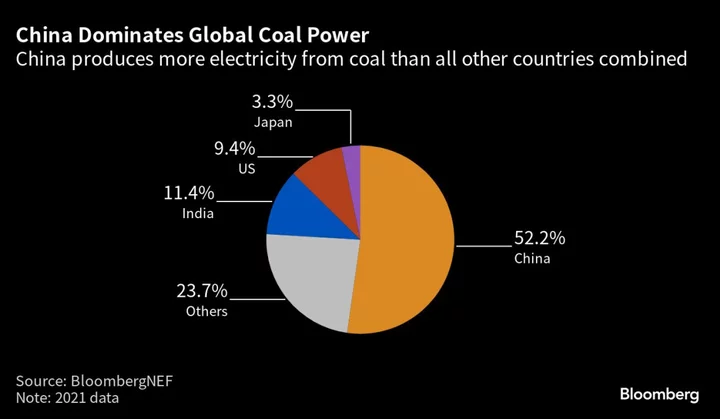China is continuing to permit massive amounts of new coal power plants, raising questions about its promises to consign the fuel to a supporting source for renewables.
The dirtiest fossil fuel has long been China’s mainstay energy source, accounting for more than 56% of total consumption. As the country has focused on meeting climate goals and installed record amounts of renewables, government officials have changed their terminology, increasingly referring to coal as having a “supporting” role to wind and solar.
The surge in new coal plant approvals, which began after power shortages last year, is raising questions about China’s commitment to that new role, Centre for Research on Energy and Clean Air and Global Energy Monitor analysts said in a joint report on Tuesday.
From January to June, China permitted 52 gigawatts of new coal capacity, bringing the total amount of plants approved or under construction to 243 gigawatts, the analysts said. That’s more than all the existing coal plants in the US, and would increase China’s capacity to burn the fuel by 23%.
Perhaps more concerning than the size of the fleet of polluting plants is their location, the researchers said. Most are being built in provinces that already have more than enough existing coal plants to meet demand peaks and balance out intermittent wind and solar generation.
In the industrial powerhouse province of Guangdong, for example, the official five-year plan for energy development published in March 2022 called for strictly controlling new coal projects. But a revision published this May, after last year’s summer power shortages, instead aimed to commission 13 gigawatts of new coal plants by 2025.
“The changes to Guangdong’s energy plans make it clear that despite the rhetoric, the new wave of coal power projects is not supporting but hindering the uptake of clean energy,” the researchers said.









